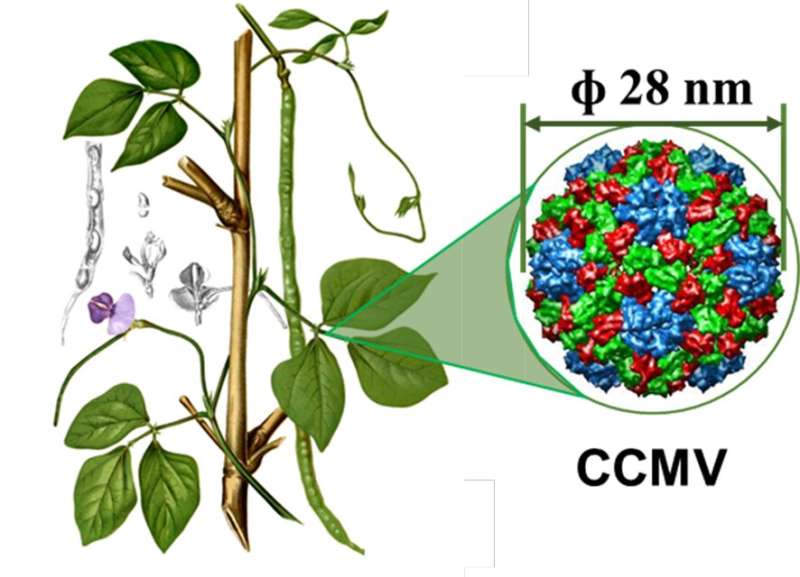A new template for nonspherical viral nanocages

In nature, viruses use nanocages to protect their genome. Some of these viruses can be disassembled into protein units to remove their genome. These protein units can then be reassembled into nanocages by other templates, the so-called virus-like particles. For her Ph.D. thesis, University of Twente candidate Shuqin Cao worked on a new template for these virus-like particles to use them in several different biomedical applications.
Cao worked on the Cowpea Chlorotic Mottic Virus (CCMV). CCMV is—as the name suggests—a plant virus, which is very easy to produce, is not harmful to humans and has been utilized for drug and gene delivery. Normally CCMV is spherical and due to its natural structure, the nanocage has limitations for the encapsulation of non-spherical functional cargo.
Coating nanodiamonds
Cao was able to coat different inorganic, non-spherical materials such as fluorescent nanodiamonds (fNDs), with the proteins of the CCMV nanocage. These extremely small diamonds emit light when hit with yellow light, making it possible to track them. "By coating the fNDs with proteins of CCMV, cells were able to uptake the fNDs, which is unique," says Cao. The coating of the proteins acts like a barrier that protects the cargo from its environment but also protects the environment from the cargo.
In her Ph.D. thesis, Cao describes two other examples of cargo with biomedical applications that she was able to coat with the protein of CCMV. For example, gold nanorods and carbon nanotubes. "Gold nanorods can be used for bioimaging, just like fNDs but also for other applications like destroying unwanted (cancer) cells," says Cao. The heat that gold nanorods create when hit with green light can cause intensive cell death. Instead of using a coating that is also toxic for the rest of the body, CCMV proteins can be used as a safe alternative.
Other shapes
According to Cao, this principle of coating the cargo with proteins could be extended to other kinds of nanocages. There are also still some challenges to overcome, such as the stability of the used proteins. Nevertheless, protein nanocages have great potential as building blocks to create more functional materials.
More information: The public defence of Shuqin Cao's PhD thesis will take place on Friday 28 February 2020. A digital version of her PhD thesis, entitled "Controlling the Assembly of Protein Cages towards Functional Supramolecular Materials," is available on request. www.utwente.nl/en/education/tg … amolecular-materials
Provided by University of Twente




















